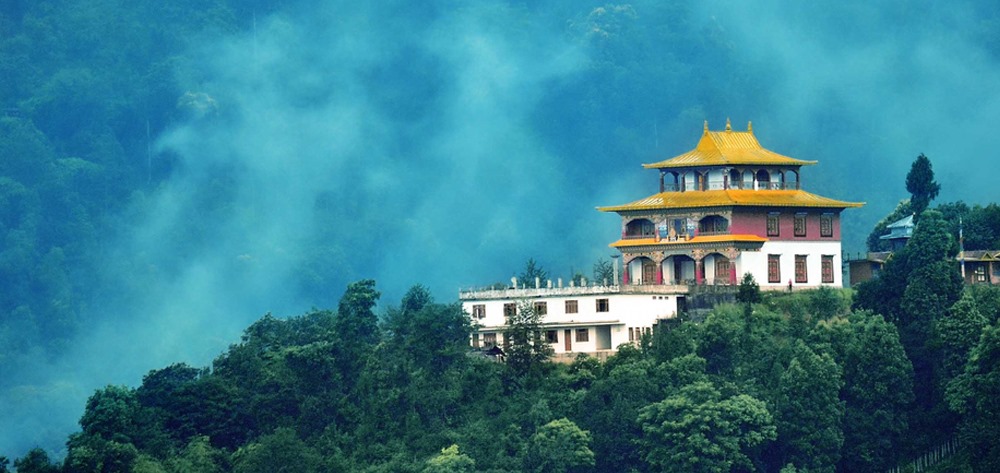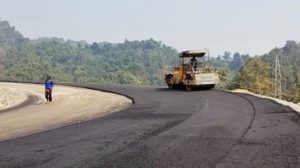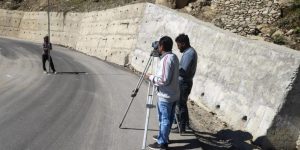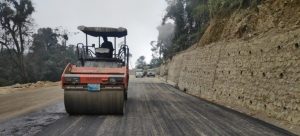- Feedback
- Sitemap
- Skip to Main Content
- Screen Reader Access
- A+ A A -
- A A
- Control Room No. - 9205949400, 011-26768950
Travails of building better infrastructure in high terrains

Travails of building better infrastructure in high terrains
It is widely recognized that constructing durable and robust National Highways (NH) is crucial for the development of our country’s remote areas and hilly terrains. Over the past two decades, the Union Government has implemented various schemes to accelerate the construction and upgrade of NHs in the Northeast. Through the Special Accelerated Road Development Programme for Northeast (SARDP-NE) which started in 2005, the Union Government through its infrastructure agencies is actively involved in upgrading and constructing NHs in the region. These NHs, which will be either 2 or 4 lanes, aim to connect State Capitals with district headquarters and also provide road access to underdeveloped and remote areas, thus fostering socio-economic growth in the region.

It is quite challenging to build infrastructure in hilly terrains, despite the initial excitement. The National Highways & Infrastructure Development Corporation Ltd. (NHIDCL) has been tasked with constructing durable infrastructure projects in the Northeast, often under difficult conditions. One such project involves upgrading a 17-km road to a two-lane road with paved shoulders, running from Pedong bypass to Rishi border on the NH-717A under the SARDP-NE. Upon completion later this year, the project will offer an alternative route to Gangtok and West Bengal, complementing the existing NH-10. The ongoing all-weather project includes the construction of twelve viaducts, a minor bridge, and nine junctions, along with other development works. This project is crucial for the country’s defense, as it will establish an all-weather route for transporting Army convoys to the borders and also significantly contribute to improving the socio-economic conditions in the region.

However, building infrastructure in the region’s hilly terrains comes with its challenges. These terrains consist of unstable soil or rock formations that are more often prone to landslides and road collapses. That results in relaying the road at an additional cost and delaying the achievement of the completion deadline. Furthermore, building this project also required complex engineering incorporating advanced technology to ensure the stability of roads and provide the end-users with viaducts, retaining walls, and breast walls to protect the road from landslides. Hydroseeding technology has also been used to protect the road. In simple terms, “Hydroseeding” means spraying a slurry of seed and mulch along the roadsides, which is commonly used to control erosion on construction sites. Additionally, constructing retaining walls, breast walls, bridges, and viaducts in such tough terrains poses a problem as the soil is unstable.
Adverse weather conditions including heavy rainfall often disrupt the construction and raise maintenance costs, thereby increasing the overall project cost. The region is prone to landslides and frequent soil erosion damages the retaining walls, breast wall, and the road affecting the project’s overall construction and leading to delays in completion.

Despite facing these tough conditions and challenges at work, NHIDCL is leaving no stone unturned to complete the project later this year. This alternate NH promises to be a game-changer for the region, providing a reliable and resilient all-weather road that will spur economic growth, boost trade, and unlock new industrial opportunities.
By bypassing the existing NH-10, which is prone to damage during monsoons, this new route will put an end to the frustrating commute disruptions that have long plagued travellers, residents and businesses alike. With a safer and more dependable road network, the region can look forward to uninterrupted connectivity, increased productivity and a significantly improved quality of life







